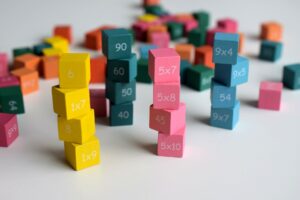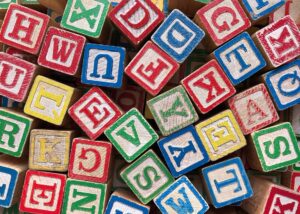
https://pixabay.com/photos/classroom-guiyang-tables-textbooks-2787754/
Things to consider:
When considering implementing games into your classroom there are many aspects you have to consider such as what equipment will the students need? Where will students get the equipment from? Are you playing the game as a whole class or in small groups? What is the role of the teacher when students are playing games? How do you differentiate instruction when playing games? What happens when students don’t know what to do or when they act out? There are many considerations for introducing games and many people stay away from them because they feel a lack of control or they believe it makes the class too chaotic. I am here to show you successful implementation and how to manage students when they are playing. When done correctly, games can provide an amazing classroom management tool, let’s learn how.
Classroom Management In General:
Classroom management comes down to some very basic aspects. The first being that there are clear and consistent rules for all students. This means that there a short list of the rules displayed and discussed with students. All classroom rules should be displayed for students so that if they forget or are not following the rules then it is placed somewhere they can find it. Students should be included in creating these rules so that there is the buy in factor. This is very important because if students don’t feel like they are apart of the process then they are more likely to forget or negate these rules. They should also not be long and complex. They should be a short list, simple, matter of fact and to the point so that both, you as the teacher and the students can actually remember them. It’s very difficult to have classroom management when you, yourself can’t remember the rules. This is the first very basic step. These rules should be gone over and over again until the students have shown that they are able to follow them. Even though it seems redundant to constantly be going over the rules, it is an extremely important step. Think of rules as your curriculum, you don’t just teach it once and move on, you go over it and incorporate situations into them so that students are being given multiple examples of how to succeed.
So what does classroom management look like for games?
When games are brought into the classroom, like anything, rules and expectations need to be established. The students need to know what is expected of them, what the purpose is and how to solve their problem when they run into them. This seems very basic and simple but these games rules are not the same as our basic classroom rules. Games are very different than the day to day activities so they must have their own set of rules. I personally like to break the rules into two categories: what does it look like? what does it sound like? The reason I do this is because I am highlighting the purpose and proper play when using games, but I am also addressing the noise level (which is often where people get stuck). I make an anchor chart which is displayed and again is continuously reviewed. I often review these rules for an entire week or two at least. By breaking this concept into two separate parts it is also showing the kids what the expected behaviour is.
These are some examples of charts that we made this year that was more simplistic than I normally do. We go through these rules and I bring up scenarios in which they will determine what the appropriate or expected behaviour is. There’s many types of charts out there so find what works best for you because ultimately it is your classroom and your rules.
How to manage fair play?
When we introduce games we talk about what fair play is. Playing fairly doesn’t always mean that you win but more that students need to learn how to compromise, how to problem solve and to focus on the  purpose of the activity versus the outcome. When students want to know about fair play I read the following story: Pig the Winner by Aaron Blabey. This story is a hilarious tale about this dog who is named Pig and how he cheats in every way possible when playing games against his friend Trevor. The students really enjoy is because although it is humorous it also outlines quickly how others feel when someone is a poor loser or does everything they can to win in an unfair way. We then go on to talk about what fair play looks like and what strategies one might use when they find themselves figuring out a fair way of taking turns. We often like to use rock, paper, scissors although there are lots of other strategies that can be used as well.
purpose of the activity versus the outcome. When students want to know about fair play I read the following story: Pig the Winner by Aaron Blabey. This story is a hilarious tale about this dog who is named Pig and how he cheats in every way possible when playing games against his friend Trevor. The students really enjoy is because although it is humorous it also outlines quickly how others feel when someone is a poor loser or does everything they can to win in an unfair way. We then go on to talk about what fair play looks like and what strategies one might use when they find themselves figuring out a fair way of taking turns. We often like to use rock, paper, scissors although there are lots of other strategies that can be used as well.
How to manage positive mindsets when playing games?
 We use the concept of Growth Mindset without our class. This is a very common program that seeks to illustrate how the brain is a muscle and that, alike our other muscles in our body, we must grow it. This is the book we use at first to understand the difference between a Growth Mindset and a Fixed Mindset: Your Fantastic Elastic Brain Stretch. This book is a quite long but it does a great job at illustrating the anatomical view of our brain and what parts of it contribute to our actions. My students love learning about the parts of their brain and which parts connect to which emotions. We talk about how math isn’t everyone’s strength yet. I also using the power of yet in our classroom, in that you may not be strong at math yet. This is a continual conversation about growing our positive mindset skills. We use these skills to maintain a positive attitude towards playing math games with other kids who may not be as good at math yet. We discuss how students who are better at math right now should use this opportunity to be mentors to others. Subsequently, those who are not as good yet should use this opportunity to learn from our peers. Part of your management strategy should be empowering your students to learn and collaborate with each other during this time. Some students may be sensitive towards not be being as good as other, but it is important to continuously remind students that it is about practicing concepts versus comparing ourselves to others.
We use the concept of Growth Mindset without our class. This is a very common program that seeks to illustrate how the brain is a muscle and that, alike our other muscles in our body, we must grow it. This is the book we use at first to understand the difference between a Growth Mindset and a Fixed Mindset: Your Fantastic Elastic Brain Stretch. This book is a quite long but it does a great job at illustrating the anatomical view of our brain and what parts of it contribute to our actions. My students love learning about the parts of their brain and which parts connect to which emotions. We talk about how math isn’t everyone’s strength yet. I also using the power of yet in our classroom, in that you may not be strong at math yet. This is a continual conversation about growing our positive mindset skills. We use these skills to maintain a positive attitude towards playing math games with other kids who may not be as good at math yet. We discuss how students who are better at math right now should use this opportunity to be mentors to others. Subsequently, those who are not as good yet should use this opportunity to learn from our peers. Part of your management strategy should be empowering your students to learn and collaborate with each other during this time. Some students may be sensitive towards not be being as good as other, but it is important to continuously remind students that it is about practicing concepts versus comparing ourselves to others.















